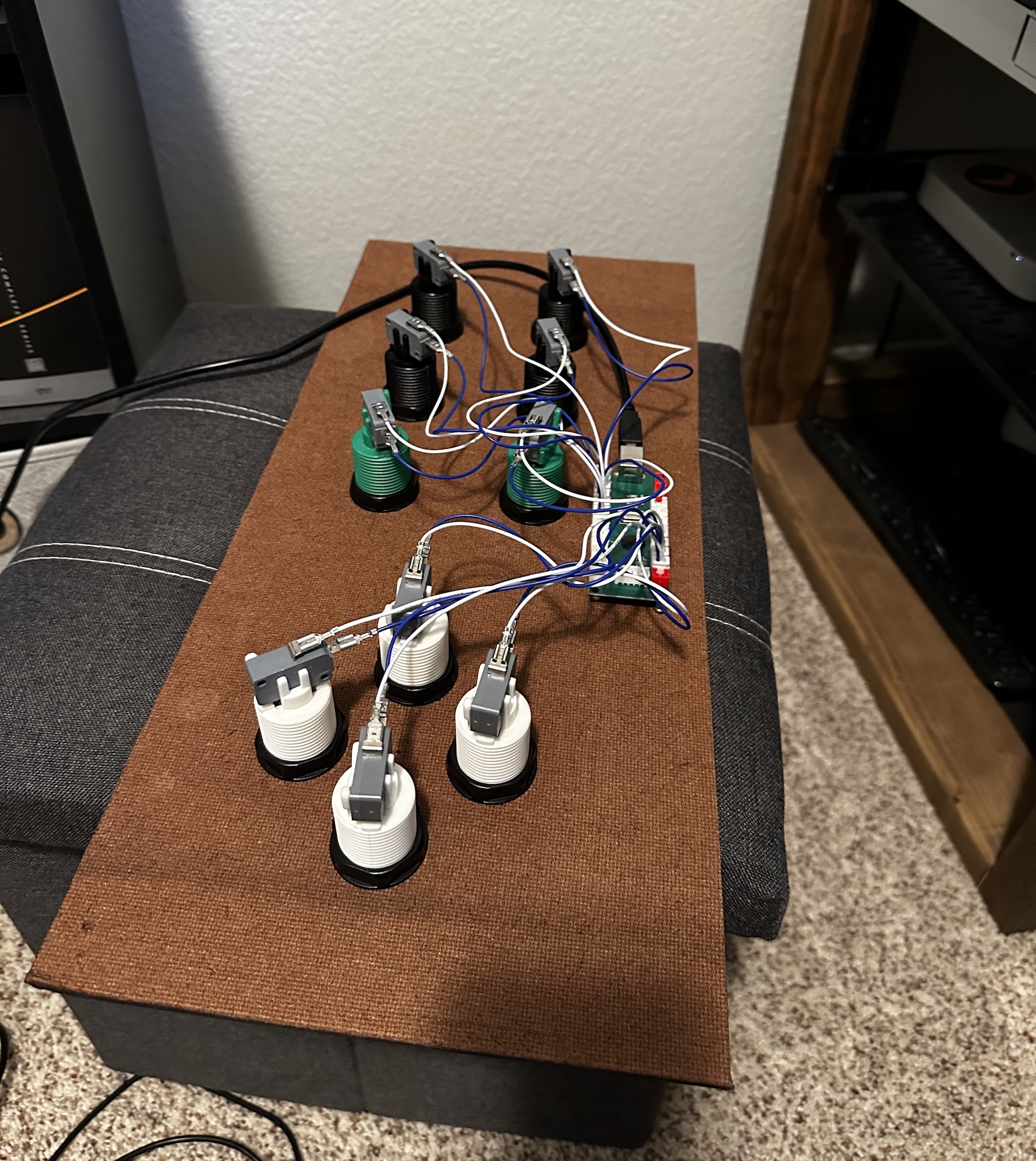GSPro DIY Button Box
After seeing a few other cool DIY boxes online, I decided to try my hand at building my own button box for GSPro. I had some spare arcade parts leftover from a previous project. So after a couple quick cuts and drilling a few holes, I had a prototype button box of my own.
The box connects to the PC via an arcade USB encoder (I’d love to upgrade to a wireless version). It appears on the PC as a joystick device, not a normal keyboard. So I needed to write a few scripts and tools for connecting the buttons with actions on GSPro.


Building the Box
Building the box is fairly easy, you could use anything from a cardboard box to a masterpiece crafted out of burled walnut. Mine fell somewhere in the middle. I used some spare furring strips and chip-board I had laying around
Parts List
| Qty. | Item | Price |
|---|---|---|
| 1 | Arcade USB Encoder | $12.88 |
| 1 | 30mm Arcade Buttons | $12.99 |
| 1 | 25ft USB Extension Cable | $14.99 |
| Total (before tax) | $40.86 |
Steps
-
You’ll first need to determine which buttons you want to know how many buttons to place on the board. I decided on 4 arrow buttons to move the aim point, and 6 other function buttons.
- Left/Right/Down/Up
- Mulligan (most used button by far)
- Flyover
- Map - Show/hide the hole map
- Drop
- Rehit
- Next/Prev Player
-
Use a measuring tape and pencil to create a grid on the plywood to accommodate your button layout. (e.g. If you want 8 buttons total, you could lay them out in a 2x4 grid.) You’ll need to drill
28mm(~1 ⁷/₆₄ inches) holes into your box to fit the arcade buttons to the box. So space your grid out into at least ~2 inch squares, more if you want more space between your buttons. -
Once you’ve marked your button locations, drill out your holes using a spade bit or hole saw.
-
Attach your buttons to the board by unscrewing the nuts, threading the button through the hole, and tightening the nut from the other side.
-
Attach the included blue and white wires to each button terminal. It shouldn’t matter which color is on which terminal, since all the button does is open and close the circuit, but I like consistency, so I made sure to keep one color always on the bottom. Up to you.
-
Attach your up/down/left/right buttons to the up/down/left/right slots on the usb encoder board. These slots act as your “joystick” control.
-
Attach the other buttons to the usb encoder board slots K1-K12. These are for any type of push button.
-
Plug the usb encoder into your computer and launch our GSPro Button Box app to setup your box.
Handling Drops
GSPro doesn’t seem to have a key commands for drop or re-hit (that I could find), or a keyboard way to move between the drop options or menus. So, I had to get creative if I wanted to have that option available on a button.
I decided to try and take a screenshot, and then use OCR (Optical Character Recognition) library to find the position of any text displayed on screen. This way we can find the drop / re-hit buttons when they’re presented.
The only downside is that the process takes about a second, which isn’t ideal when a user presses a button. You’d want it to be instant. So I added some on screen text that says “Attempting Drop” instantly when you press the button. This way you know it received the button press and is working on finding the right option.